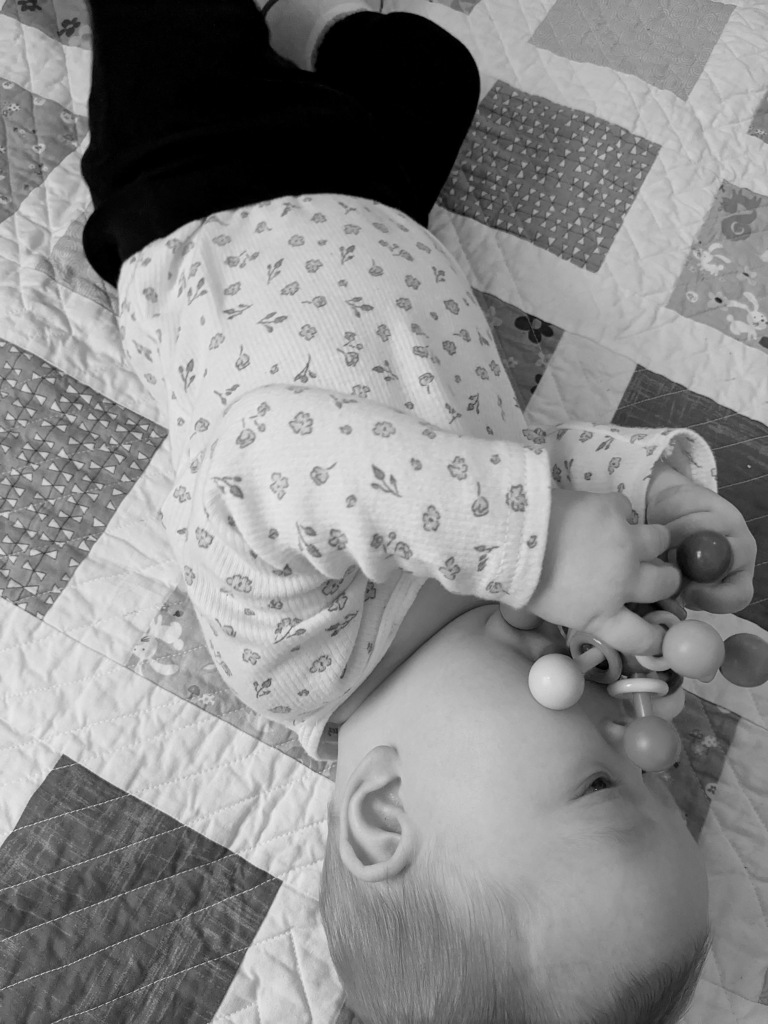We’ve just put our little one down for the night and she will *hopefully* sleep for another 6 hours, until her one (and now only!) night feed. She is almost 7 months old, which seems incredible to me. How did the time go by so fast? But also, how did we figure out our way through? I remember the nights of waking every hour or less, the seemingly never ending crying sessions, the steep learning curve – and wondering how we would survive all in one piece. I think many new parents wonder the exact same thing! But it is more challenging when one of those parents live with a chronic illness or chronic pain condition, like I do.

You have one big positive working for you as a new parent with a health condition that makes you more ready for this than most first time parents. You know how to navigate tough situations that require perseverance. Fatigue? Done that. Constant doctor’s visits? Yup. Feeling overwhelmed by a massive life change or going stir crazy stuck at home? Been there. It’s very different, of course, but having navigated the challenges of your illness makes you much more prepared to mentally handle the stress of parenting and more resourceful in finding solutions. You will get through the difficulties, because you are a survivor and because you have to. Just look at that adorable little monkey (not sleeping) beside you for all the motivation you need!

Unfortunately, I found that despite all of my online searching, it was really hard to find tips or strategies to help new parents living with illness. There are probably thousands of blog posts that could be written on this topic alone, so here I can only try to make a start.
The Comfortable Carrier You Bought Can Be For Your Partner: In my case, my husband uses our carrier the most, and this gives me a break. . Sometimes a bouncer or swing just doesn’t cut it and our baby wants a snuggle. Since my husband works from home, when I need a rest , we pop our daughter in it and he works at a standing desk! Other times it allows him to do double duty, washing dishes while looking after her while I am resting. Bonus: Since our baby has bad reflux, the carrier allows her to be upright, which reduces her heartburn.
Core Strengthening Or Pelvic Physical Therapy/ Physiotherapy Can Help: Recovering from pregnancy and delivery is difficult. Your postpartum recovery could benefit from pelvic physiotherapy if you have issues like peeing when you sneeze abdominal muscle separation, pelvic pain, or back pain. Pelvic physio treatments have really helped me to improve SI joint pain during and after having my baby, so I recommend it if you have similar challenges.
Try A Belly Band: A belly band may help provide stability for the 8 weeks after delivery, according to some physical therapists. These bands support your postpartum abdominal wall and pelvis while you heal your core after birth. Although a belly band didn’t do much for me, we are all different, so it is worth looking into.
BioFreeze Is Your Friend (Or Other Menthol Patches/Rubs): Biofreeze is great. It really helps muscle pain and is the best non prescription treatment in my opinion. I also use menthol patches for persistent pain, such as back pain overnight. It’s a great non-prescription addition to your usual medication, stretching and strengthening routine. Plus it’s safe while breastfeeding.
Rest/Stretch Your Back While Baby Does Tummy Time Or Is On Their Play Mat: While your little one is doing tummy time, or playing on their activity mat, take time to stretch or rest your back. I do some stretches that target the pain carrying baby has specifically caused: cat/cow yoga poses, glute figure 4 stretch, pectoral “floor angel’ stretch, hugging knees to chest, and side bends. Lying with your feet on a chair can also relieve back pain.
Play on the Bed: On a day where my pain or fatigue are high, I put our baby on a blanket on the bed and lie down on my back beside her. She can chew on a teether, kick, or do tummy time while I rest my body.
Sing songs If Playing Or Carrying Is Too Painful: Sometimes you need to have an alternative way to interact that doesn’t involve picking up the teether for the 100th time, or anything physically repetitive or strenuous. My little one loves singing time. I don’t have an amazing voice, but she doesn’t care about that! We love listening to Charlie Hope on Spotify (the best children’s singer!). Other days we put on the Beach Boys and she kicks away happily!
Change Position as Often As You Can: Change your activity and play location often- every 10, 15 or 30 minutes. Discomfort often builds by locking into one position, like sitting in a certain chair for a long period. It soothes the nervous system to change your pose frequently, as able. Sit in a chair to read, then lie on the bed to sing, then walk around together looking at items in the house. Baby can hang out in their bouncer or swing if you need a break to rest your body in between.
Find a Comfortable Way To Sit On the Floor: Babies inevitably end up on the floor for much of the time. This can be uncomfortable if you have pain. When I’m sitting on the floor, I use a cushion placed near the wall or something I can lean my back against. I’m looking into getting a floor chair. Literally a chair, without legs, so you can sit with back support on the floor. Genius!
